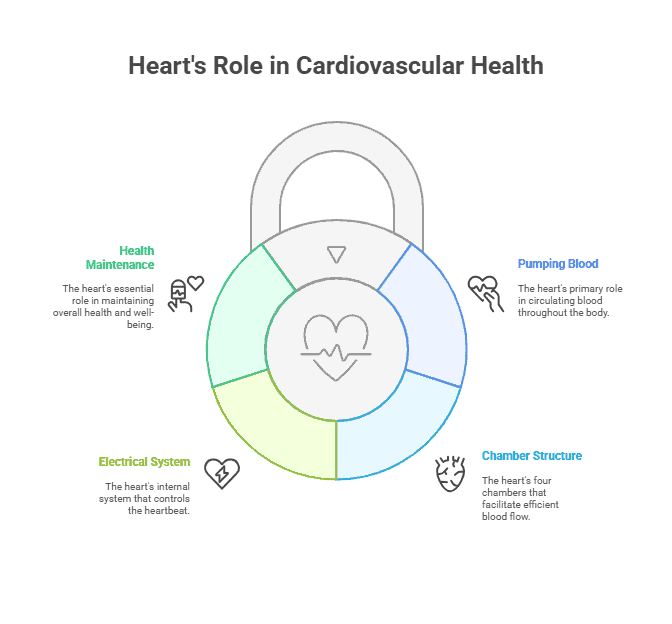The cardiovascular system, also known as the circulatory system, is a complex network of organs and blood vessels that work together to transport oxygen, nutrients, and waste products throughout the body. At the center of this system is the heart, a muscular organ responsible for pumping blood to all parts of the body.
Anatomy of the Heart
The heart is divided into four chambers: the right atrium, right ventricle, left atrium, and left ventricle. The atria are the upper chambers of the heart, while the ventricles are the lower chambers. The heart is also divided into two sides: the right side, which pumps blood to the lungs for oxygenation, and the left side, which pumps oxygenated blood to the rest of the body.
Function of the Heart
The main function of the heart is to pump blood throughout the body. This process begins with the right atrium receiving deoxygenated blood from the body and pumping it into the right ventricle. The right ventricle then pumps the blood to the lungs, where it picks up oxygen and releases carbon dioxide. The oxygenated blood returns to the heart, entering the left atrium and then the left ventricle, which pumps it to the rest of the body.
Importance of the Heart in the Cardiovascular System
Without the heart, the cardiovascular system would not be able to function. The heart’s pumping action is essential for maintaining blood flow to all parts of the body, ensuring that every cell receives the oxygen and nutrients it needs to survive. Any disruption in the heart’s function can lead to serious health problems, including heart disease, heart failure, and even death.
Summary
In summary, the heart plays a crucial role in the cardiovascular system by pumping blood to all parts of the body. Its four chambers work together to ensure that oxygenated blood is delivered to the tissues and organs, while deoxygenated blood is sent to the lungs for oxygenation. Understanding the anatomy and function of the heart is essential for maintaining overall health and preventing cardiovascular diseases.
Key Takeaways:
- The heart is a muscular organ responsible for pumping blood throughout the body.
- The heart has four chambers – two atria and two ventricles.
- The heart functions as part of the cardiovascular system, which also includes blood vessels and blood.
- The heart’s main function is to pump oxygen-rich blood to the body and oxygen-poor blood to the lungs.
- The heart’s electrical system controls the heartbeat, which is regulated by the autonomic nervous system.
- The heart is essential for maintaining overall health and well-being.
Key Terms:
- Heart: The muscular organ responsible for pumping blood throughout the body.
- Cardiovascular System: The system of the body composed of the heart, blood vessels, and blood that circulates nutrients and oxygen to cells and removes waste products.
- Cardiac Cycle: The sequence of events that occur during one heartbeat, including systole (contraction) and diastole (relaxation) of the heart chambers.
- Myocardium: The muscular tissue of the heart responsible for its contractions.
- Heart Rate: The number of times the heart beats per minute.
- Cardiac Output: The amount of blood pumped by the heart in one minute.
- Electrocardiogram (ECG or EKG): A test that records the electrical activity of the heart.
- Heart Sounds: The sounds produced by the heart valves closing during the cardiac cycle.
